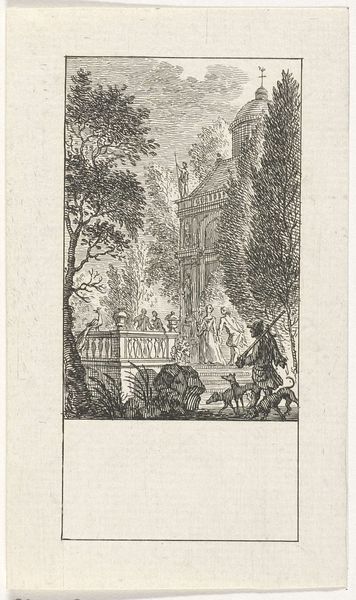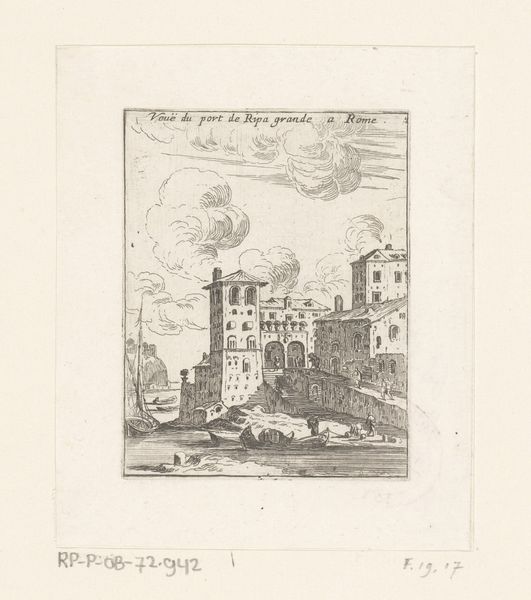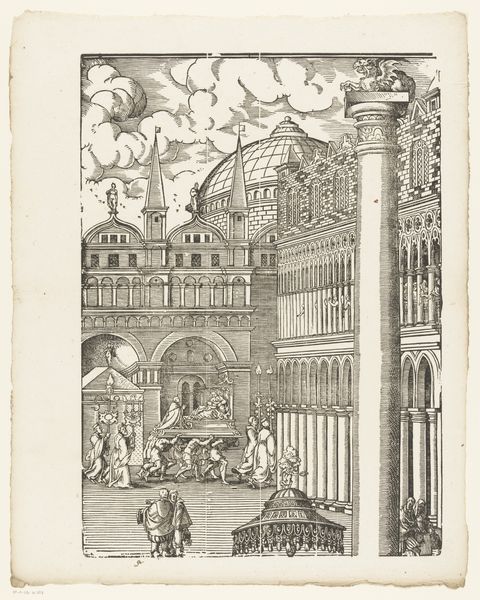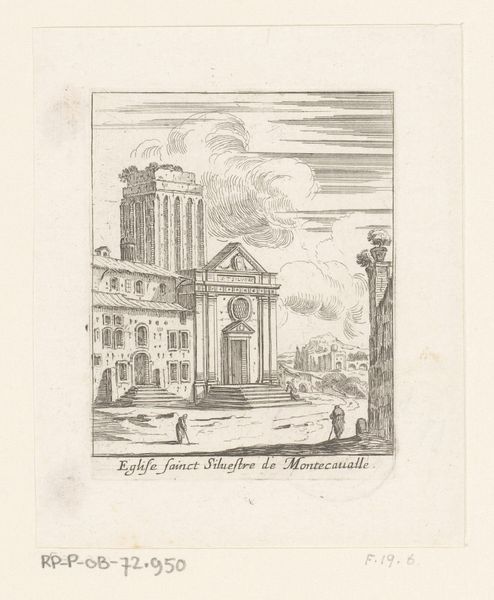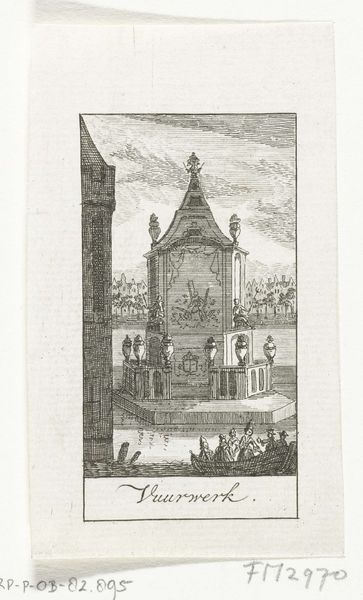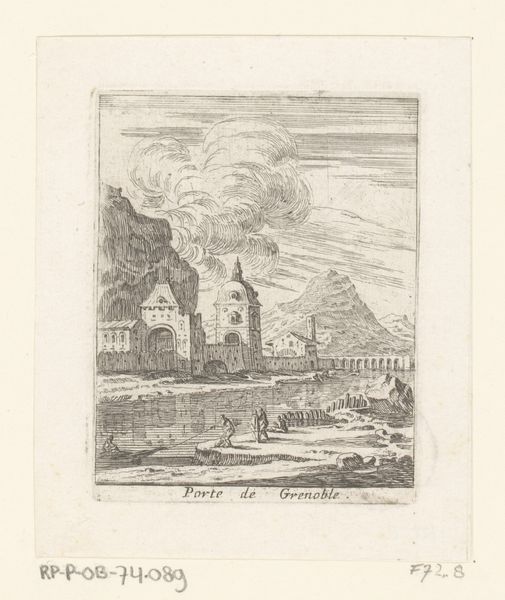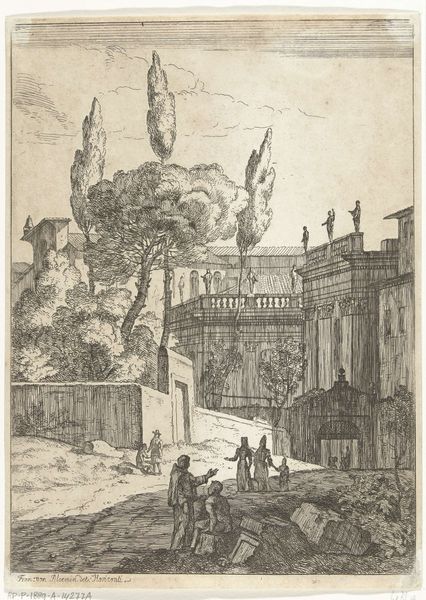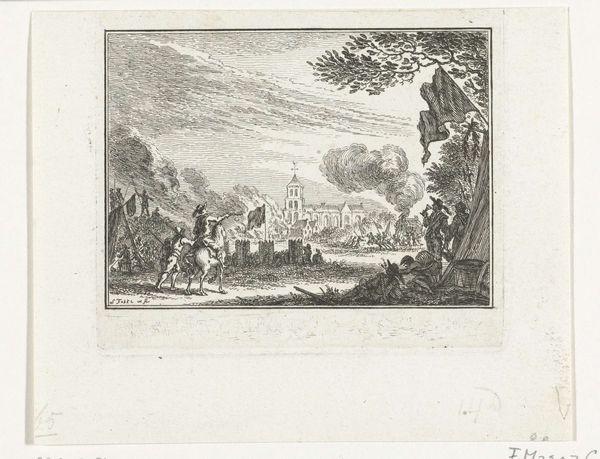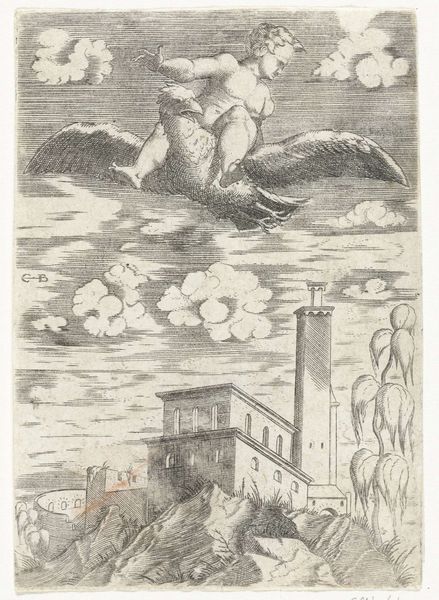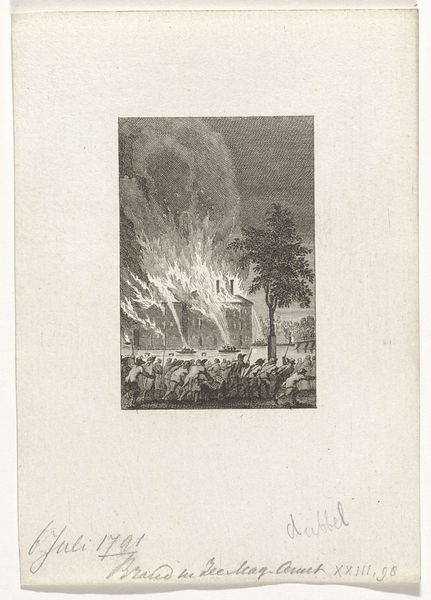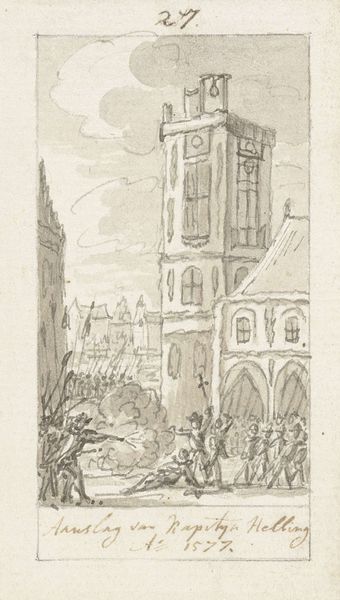
print, engraving
#
dutch-golden-age
# print
#
landscape
#
cityscape
#
history-painting
#
engraving
Dimensions: height 101 mm, width 58 mm
Copyright: Rijks Museum: Open Domain
Curator: What a striking image! This is "Fireworks in Amsterdam Celebrating the Peace of Rijswijk, 1697" by Jan Fokke, dating from 1779-1781. It's an engraving, offering a window into a jubilant moment in Amsterdam's history. Editor: My initial reaction is captured by the image's drama! The high contrast between the dark night and the explosive fireworks creates a stunning visual experience. There's an inherent tension with the geometric, perfectly balanced facade in the background. Curator: Indeed. The piece depicts the city's celebrations marking the end of the Nine Years' War with France. Peace was always good for trade and stability, things close to Amsterdam’s heart. Editor: And you can almost feel the pulse of the city emanating from the image’s formal properties, from the dense hatching evoking atmosphere to the rigid architecture. The juxtaposition is extremely thought provoking, almost daring. Curator: Fokke masterfully uses linear perspective to draw the eye towards the center, and there is more to the balance that merely its tension with the chaotic freedom of the fireworks. Observe how carefully ordered the placement of buildings is. It communicates a very controlled, yet lively social atmosphere. Editor: Exactly. Semiotically, the towering building can be seen as an anchor or a barrier for our fireworks as well. They want to overcome this static element, yet the darkness they are confined in creates a limitation of movement and gesture. The people in the scene want to join and share a happy moment, yet feel held back by static composition and visual noise of too much hatching. Curator: I see your point. This event likely occurred at Dam Square, with the Royal Palace – formerly the Town Hall – as the backdrop. Jan Fokke memorializes the important and very public intersection between civic governance and popular festivity. Editor: It speaks volumes about Amsterdam’s identity then and now, still oscillating between progressive ideals and cautious governance. Fokke's brilliant handling of line and form offers such profound depths within what appears to be a simple historical document. Curator: Analyzing it in this way makes this artwork especially engaging. I am more interested in exploring how art acts as a medium for the history to communicate its ideals. Editor: And I, on the other hand, will contemplate those forms! This brief encounter leaves me contemplating our fundamental artistic choices and creative visions.
Comments
No comments
Be the first to comment and join the conversation on the ultimate creative platform.
